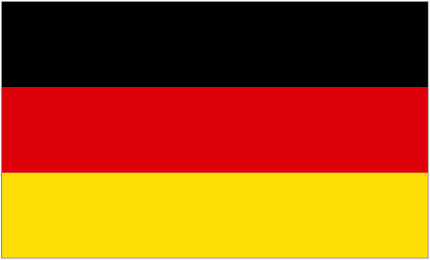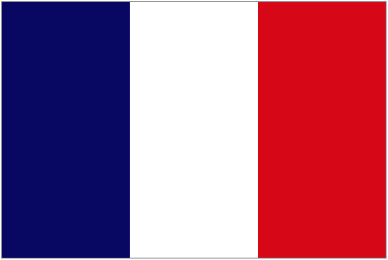 Tippen Sie auf die Flagge, um die Fragen auf Deutsch zu sehen
Tippen Sie auf die Flagge, um die Fragen auf Deutsch zu sehen
 Appuyez sur le drapeau pour voir les questions en français
Appuyez sur le drapeau pour voir les questions en françaisSince the early Maori settlers arrived in the Whakatu (Nelson) region in the 1300s, they have referred to the hill on which you now stand as 'Piki mai', which means 'climb hither'.
As well as being a staging post for early trade in and distribution of pakohe (argillite) from the nearby mineral belts, Pikimai served as a natural vantage point overlooking Whakatu to the north, Whakapuaka and Maungatapu to the east and Waimea to the west. This allowed Maori to establish a fortified settlement (known as a 'pa') on the site to where local whānau (families) could retreat if under threat from outside communities.
When the first European settlers arrived in the region in 1841, Pikimai appeared to be unoccupied and so the hill was quickly used by them as a suitable place to build some initial, temporary buildings.
When Bishop Selwyn, the Anglican Bishop of New Zealand, first visited Nelson in 1842, he brought with him a tent in which some 200 people congregated for the first 'church' service on the site on August 28th. The tent lasted just over one week until it was blown away in a storm, but fortunately, enough money was raised during his visit to purchase a surveyors' room and immigration shed for conversion to a temporary church.
During the early 1840s land disputes between Maori and the European settlers were common which led to the early Nelson residents building their own defensive refuge on what was then known as Church Hill, calling it Fort Arthur.
Towards the end of the 1840s Nelson was finally recovering from a shaky start, which included the loss of leaders and a period of severe food shortages. By 1848 Bishop Selwyn had acquired the summit of Pikimai as a site for a new church. The cluster of buildings within the fort were removed. Enough funds were on hand to make a start on a purpose-built church which was completed in 1851 and stood overlooking Trafalgar Street.
A Royal Decree from Queen Victoria in 1858 not only established Nelson as a Bishop's diocese, allowing the construction of Nelson's cathedral, the Church on the Hill, but also changed the small town of Nelson into a city.
During the late 1880s and early 1900s the original wooden cathedral was extended and repaired various times in response to population growth and earthquake damage.
Eventually, after a fire in the mid 1920s, it was deemed that the wooden structure was 'a menace to the public' leading to a new cathedral, to be built from Takaka marble, being designed. Contruction work continued into the 1930s, stopping in 1932 as a result of the Great Depression, and then again in 1939 as a result of the Second World War.
It was not until February 1957 that a simplified plan to complete the cathedral, using concrete, was approved. It drew howls of protest, including criticism of how the proposed tower would look from Trafalgar Street. The Nelson Evening Mail declared: "...the changed design cannot compare with the most commanding ecclesiastical site in New Zealand...we are apparently to be satisfied with the second best."
The controversial plan was approved in September 1957, however, and fundraising began. Work started in May 1964 and the new cathedral was dedicated on 28 May, 1967. The cathedral became debt free in 1971 and was consecrated by Bishop (Peter) Sutton on 14 April, 1972.
It has since become an iconic feature of the Nelson skyline, visited by many locals and vistors alike. Since the Christchurch earthquakes of 2011, Nelson cathedral has become the most visited cathedral in New Zealand.
Now it's your turn to visit the cathedral and its grounds to find the answers to these questions to entitle you to log this virtual cache…
Before you go, remember that the Cathedral is open to the public from 9am until 6pm every day of the week all year round, and there might be services being conducted during those hours, but the grounds are accessible 24/7
Logging requirements bit...
To claim a 'find' for this virtual cache, you will need to visit each of the 6 waypoints listed to find answers to the following questions:
Q1) At Waypoint 1 you will find a plaque identifying one of the early structural features built on Piki mai. What is it?
Q2) At Waypoint 2, you will find another plaque commemorating another early, temporary structure. What was erected here and how many people did it first hold? ...You did read 'The history bit', didn't you?
Q3) At Waypoint 3, part way up the Church Steps, you will find a marble plaque. To whom is it dedicated?
Q4) Inside the cathedral now, at Waypoint 4. What was gifted to Bishop Hobhouse before his return to England, and what is it used for?
Q5) Moving round the cathedral, find the chair shown in the picture below. 
A well-known bottom once sat here. Whose?
Q6) Finally, to Waypoint 6, were you will find a quite plaque dedicated to Thomas Brunner. What was he first to do?
Once you have gathered your answers, send them to me via the Geocaching Message Centre, or by email (don't forget to include your Geocaching name). I'll then give you the OK to log the 'find'.
Have fun!

Protokollierungsanforderungen...
Um eine "Suche" für diesen virtuellen Cache zu erhalten, müssen Sie jeden der sechs aufgeführten Wegpunkte besuchen, um Antworten auf die folgenden Fragen zu finden:
F1) Am Wegpunkt 1 finden Sie eine Plakette, die eines der frühen Strukturmerkmale von Piki Mai darstellt. Was ist es?
F2) Am Wegpunkt 2 finden Sie eine weitere Gedenktafel, die an eine andere frühe temporäre Struktur erinnert. Was wurde hier aufgestellt? und wie viele Leute hielt es zuerst? ...Sie haben "das Historie-Bit" gelesen, nicht wahr?
F3) Am Wegpunkt 3, ein Stück die Kirchtreppe hinauf, finden Sie eine Marmortafel. Wem ist es gewidmet?
F4) In der Kathedrale jetzt am Wegpunkt 4. Was war Bischof Hobhouse vor seiner Rückkehr nach England geschenkt?, und was wird es verwendet?
F5) Bewegen Sie sich um die Kathedrale herum und finden Sie den Stuhl, der im Bild unten dargestellt ist.
Eine berühmte Frau saß einmal hier. Wer?
F6) Zu Waypoint 6 finden Sie schließlich eine ganz eigene Tafel, die Thomas Brunner gewidmet ist.Was hat er zuerst gemacht?
Sobald Sie Ihre Antworten gesammelt haben, senden Sie sie mir per Geocaching Message Centre, oder per email (Vergessen Sie nicht, Ihren Geocaching-Namen anzugeben). Ich gebe Ihnen dann das OK, um die "Suche" zu protokollieren.
Habe Spaß!

Exigences de journalisation...
Pour réclamer une «recherche» pour ce cache virtuel, vous devrez visiter chacun des 6 points de cheminement répertoriés pour trouver des réponses aux questions suivantes:
Q1) Au Waypoint 1, vous trouverez une plaque identifiant l’un des premiers éléments structurels construits sur Piki mai. Qu'est-ce que c'est?
Q2) Au Waypoint 2, vous trouverez une autre plaque commémorant une autre structure provisoire ancienne. Qu'est-ce qui a été érigé ici? et combien de personnes a-t-il tenu en premier? ...Vous avez lu 'le bit d'histoire' ne vous a pas?
Q3) Au Waypoint 3, à mi-chemin des marches de l'église, vous trouverez une plaque de marbre. A qui est-il dédié?
Q4) À l’intérieur de la cathédrale, au Waypoint 4. Ce qui a été offert à Bishop Hobhouse avant son retour en Angleterre?, et A quoi cela sert?
Q5) En contournant la cathédrale, trouvez la chaise illustrée ci-dessous.
Qui était assis une fois ici?
Q6) Enfin, vers Waypoint 6, vous trouverez une plaque dédiée à Thomas Brunner.Qu'est-ce qu'il était le premier à faire?
Une fois que vous avez rassemblé vos réponses, envoyez-les-moi via le Geocaching Message Centre, ou via email (n'oubliez pas d'inclure votre nom de géocaching). Je vous donnerai ensuite le consentement pour consigner la «recherche».
S'amuser!!